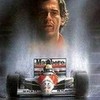If you actually found out the amount of the fuel burnt by F1 cars compared to obvious sources as Planes or Boats you would realise that F1 is not even 1% in the equation.
I see your point... in the grand scheme of things it makes zero differene. However that's not the point... its a bit like the reason why you or I might run a marathon for charity... or turn our lights off at night... on our own we're not going to change the world, but its simply "setting a good example". The participants in F1 want to "set a good example" in the very public sport that is F1, and this is one simple way they can set a good example.
Why does the DRS car brakes so much earlier at the first braking
point (~12s), but brakes equally late at ~63s, when braking from higher
speeds.
The graphs could be a bit confusing because they're based on time, Its not really possible to deduce from the graphs at what place on the track (in terms of distance along the straight for example) each car is braking because the time depends on how fast they were relatively up to that point in time. Taking the first braking point as an example -the DRS car is sufficiently far ahead at that point that it appears like he is braking a lot earlier (he
will be braking
a bit earlier by virtue of the higher speed), whereas in fact its just that the car has reached that point on the track first... Taking another point (at about 63 seconds) the two cars appear to brake at the same point despite the higher speed of the DRS car... in reality the DRS car is slightly behind the other car at that time and that means they brake at the same
time although
not the same point on the track...
Hope that's clear-ish?!
To confirm; Yes I assume that the DRS is only active on the straights when accelerating.
Do you assume constant torque or falling torque in your simulation?
Would it affect different engines in a different way, in regards to
there power/torque characteristic, perhaps handicapping some more then others.
I assume flat-ish torque from 16000rpm to 17500rpm, dropping off after that. Yeah, different output curves will make a difference. Different tracks will also make a difference to the DRS vs RPM balance... but I assume that as long as we're within 1 second of the current lap times people would be happy (after all, that's far smaller than the current field spread)?
Do you think, it would alter the use of KERS?
Maybe a bit -with DRS active you'd have less grip, so you might have to hold back on using KERS until a bit further down the straight until you've built up a bit more speed. This could make things exciting as drivers try to activate the DRS and the KERS as early as possible... possibly some corner exit over-steer?!



